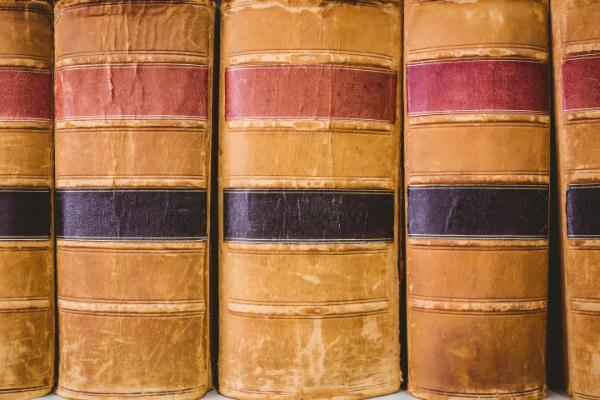In This Section
- Home
- About
- Sessions & Workshops
- Postgraduate Supports
- Academic Integrity
- Academic Writing & Studying Resources
- Maker Space
- Digital badges & programmes
- SPEAK: Presentation skills Digital Badge
- “Everyday Matters: Healthy Habits for University Life" Digital Badge
- Digital Badge in Independent Thinking
- Avoiding Errors in Reasoning
- Creating and Maintaining a Professional Presence Online
- Survive & Thrive: The ABC's of first year
- UCC Tandem Readers Programme
- Climate Law & Governance for Engaged Citizenship
- Write Here, Write Now: Postgrad push-through
- Digital Passport
- Bystander Intervention Digital Badge
- Your Brainpower
- If I knew then what I know now
- Preparing for Exams
- Assignment Calculator
- The Kit
A Student's Guide to Critical Reading

Is there a growing stack of books and articles you need to get through on your table? A combination of excitement and worry about dense, scholarly readings is in the air and you find yourself hoping you could read as fast as a professor. Luckily, support is available so get yourself a big cup of warm tea or coffee, settle in, and start reading!
I am Sabrina, a final year undergraduate student of Art History and English. As you would assume, I read a lot for my course. Critical reading and analysis are key skills for my academic areas and having to read several challenging texts in my journey so far, I have cultivated an effective approach to tackle close reading. As you are aware, it differs a lot from reading for memorisation or entertainment. Your goal is to be an active reader, one with a lot of questions and perhaps a bit of suspicion towards the text’s author. Critical reading is a tool to better your understanding of said material, gradually develop your own perspective and think critically within your discipline. Bear in mind that my skills have been developed to suit my fields within Arts and Humanities so your approach will differ if you are in STEM education. Nevertheless, none of these skills will go to waste in any discipline and the general attitude applies to all.
Before I get to my advice, I want to highlight that, you should first acknowledge your standpoint and relationship to the reading assigned. Understand that especially during undergraduate years, you are not the ideal reader for the text. You are a student (or perhaps a beginning scholar, graduate) who is learning about and being initiated into an academic discourse. Your assigned texts will be written by specialists in the area, critical theorists, philosophers, historians, professors etc. They will use terminology which you might not be familiar with and link their arguments to discussions which you have not read. On top of that, many fields in Humanities and Arts are very interdisciplinary so it will be challenging to orient yourself in such texts. Therefore, give yourself some grace and importantly, a lot of time. Close reading is time-intensive, and you should dedicate it enough space so that you properly grasp what is available to you in the text. Now, without further ado, this is my approach to reading critically:
1. Familiarise yourself with the text’s general background. Who is the author and what is their body of work about? When was this text written and how was it influenced by the dominant philosophy/politics/history of the period?
2. Structure your reading. Skim-read the text first or read a summary to get an idea of what the piece will talk about. You will know what you are getting into and thus can approach it with more clarity from the beginning. This helps a lot especially if you have not been introduced to this text or are not familiar with its discipline. If your text is especially long, perhaps even a book, mark the chapters with sticky notes so that you have a structure to work with and feel motivated when seeing the coloured tabs getting closer and closer. Also, pay attention to titles, first/last paragraphs, potential images, and the overall length so that you can estimate your reading time.
3. Question the text, its author, and your own reader response. What is the author’s argument and how is it supported? What question is the text exploring and what kind of answer does it give? Do you agree with that answer? Is the author somehow biased, and if yes, for what reason? How does the period’s thinking impact or colour the argument presented?
4. Interact with the text actively. Underline phrases and key words, add comments, make notes, and mark important moments in the text. Also, identify what goals you have for reading the text, considering the context of your lecture/assignment/course, and then relate/apply the knowledge from your close reading to class material. This can shape the questions you will be asking during your reading.
5. Reflect on what you have read. Think of which questions the text brought up and how they were answered, with what evidence and for what purpose. Write a short paragraph in your own words to evaluate the text’s argument and synthesise it within your own understanding/knowledge of the topic.
Critical reading can feel intimidating, but there is nothing you cannot go through with the right tools and mindset. Keep in mind that you are learning from the text so it will be a slower process. Yet sometimes there is nothing better than getting comfortable with a book or an interesting article! (Although I may be slightly biased as an English lit student.)
Happy reading!
Skills Centre
Contact us
Q -1 (Q minus 1), UCC Boole Library,
